Oklahoma Rain Gardens
I have a low spot that has stayed mud for weeks upon weeks, most of winter, and for a long time have planned on a rain garden in the area. I'm finally ready to get moving on this project and have begun diagramming the area and researching plants.
The area is about 1/2 way down a slope, which I've previously addressed with berms/swales that are in varying stages. However, overflow from those will end up in the rain garden. It will still receive runoff from part of the roof and another portion of the yard. The area receives 4-6 hours of morning to midday sun, a few spots sit in <2 hrs sun, and it sits on the heaviest clay you can imagine. For real, I live a mile from where Acme digs up the very same clay to turn into bricks. It is bordered on the south and west with a privacy fence and the overflow will be directed under the fence. It's been too muddy to measure exact dimensions but I'm creating it the same size as the mudhole that is currently there. If I do nothing, it already drains in less than 1 day, so I have that going for me, but the dog tracking in the mud is a problem I'd like to resolve.
I know I'm trying to eat a very large elephant with this project. I've researched rain gardens pretty thoroughly already but was hoping for real, first-hand knowledge of the dos and don'ts and the "I wouldn't make that mistake twice" nature. Plant recommendations - especially things shorter than 2 ft - are also welcome. I'm having trouble IDing shorter natives that will tolerate my conditions.
Comments (26)
hazelinok
5 years agoThis is very intriguing. Can you add a picture of the area you're wanting to be the rain garden?
dbarron
5 years agolast modified: 5 years agoThe problem I see (from Oklahoma) is that in winter and spring, it will be muddy/wet. In summer, it begins to dry and by fall it's baked hard.
So, unless you plan on supplementing water, it's going to be a very hard fit.
Please elaborate and I can start trying to reel off some natives, if you'd like.
Related Professionals
Londonderry Landscape Architects & Landscape Designers · Montgomeryville Landscape Architects & Landscape Designers · Signal Hill Landscape Architects & Landscape Designers · Battle Ground Landscape Contractors · Brooklyn Park Landscape Contractors · Clayton Landscape Contractors · Dallas Landscape Contractors · La Verne Landscape Contractors · Los Banos Landscape Contractors · Matteson Landscape Contractors · New Berlin Landscape Contractors · Pomona Landscape Contractors · San Pedro Landscape Contractors · Winter Gardens Landscape Contractors · Quincy Decks, Patios & Outdoor EnclosuresMegan Huntley
Original Author5 years agoHere’s a not great picture. This is taken facing south. The tree on the left side doesn’t cast as much shade as you would think.
Dbarron - the recommendations are to use native wildflowers - stuff that grows in ditches, for that very reason. I’ll plant them in clusters like a more traditional garden though - well that would be the idea at least.
bon
5 years agoI started on mine by measuring with an A frame and then I laid out a 5' grid with rope and measured my yard to plot a rough grading plan. I forget all the details, but I ended up measuring water runoff avg per square foot and such. The property is on a slope. Powerful earthworks would have yielded a small stream in the middle of my back yard over time with water gardens, managed ponds, berms and swales would have provided seriously clean storm water runoff for the city's use. It was all great! I obsessed over the information for a very long time. (This is a relatively large back yard.)
One day I noticed the city's storm water run off seemed to have been clogged following a small flash flood. I began a walk about and discovered the city doesn't have adequate storm water run off to handle the water build up I was planning to create nor the excess storm water runoff. My poor neighbor's trailer would end up an island in the middle of a pond.
heheMegan Huntley
Original Author5 years agoOh gracious! Mine currently all drains out to the street just without impediment so our neighborhood drainage can handle it. The city hasn’t expanded the infrastructure to handle all the runoff from the development all around my neighborhood though so a couple times last spring major streets were closed due to flash flooding. My goal is simple - to slow down what I’m adding to the mix and get some wildflowers out of the deal! Loldbarron
5 years agolast modified: 5 years agoWell Oklahoma is a cross roads area, with black soil prairies, red clay caliche, sandy soils, and even swamps/wetlands. So...there's lots of habitats and regions in the state, what is your habitat and where in the state are you?
I mean woodland wildflowers grow in the NE, and cactus grow in the south central, tall grass prairie in the north central, alligators and palms grow in the SE swamps. That's pretty varied ;)
Okiedawn OK Zone 7
5 years agoWe have red clay like that, especially all around our house, front yard and front garden. We call it flower pot clay because you could make clay pots from it, so I have a lot of experience with native plants and their tolerance of standing water. There's not many short natives that will tolerate being perpetually wet and, yet, also be happy when the weather pendulum swings and the area become hard, sun-baked dry clay. So, what we see happen with native plants is that there is an ebb and a flow---they come and they go---depending on how wet or dry a year is. For several mostly dry years we'll have certain plants in an area, and then we'll have a very wet year or at least several consecutive months of very wet weather and those plants disappear only to be replaced with the few things that tolerate perpetual mud and standing water. Texas frogfruit (Phyla spp.) is both extremely tolerant of drought and extremely tolerant of wet, soggy clay and standing water. The frogfruit on our property is extremely low growing---creeping across the ground like a ground cover.
We have a swamp, but it has almost no low-growing plants. It used to be spring-fed, but we lost the spring in a time of exceptional drought and it never came back, so now it is more of a seasonal swamp instead of a year-round swamp. Most of the plants that grow there are the types of prairie grasses that tolerate heavy clay and standing water.....Indian grass, little blue stem, brushy blue stem, switch grass, ut then also buttonbush trees, chokeberry/chokecherry, possomhaw holly, goldenrod, swamp milkweed, cardinal flower, etc. On some of the higher edges of the swamp we have clasping leaf coneflower, but it goes away in prolonged extremely wet periods although it tolerates alternating wet/dry conditions well. Horsetail reed seems to tolerate endless standing water. Sometimes Ironweed pops up in about the same area as the clasping leaf coneflowers.
On the edges of our ponds, which also alternate between wet and dry depending on the season, we often have sumac, swamp sunflowers, swamp hibiscus, etc. Native dewberries thrive on the wet edges too. All of those get taller than what you are looking for.
In dense red clay on the edge of my garden, I grow Halberd-leaf hibiscus, Texas Red Star Hibiscus, crinum lilies, spiderwort and pink evening primrose. The pink evening primrose is not necessarily by choice, but it is more low-growing and might meet your needs. It is extremely invasive though and can take over every inch of ground you have. I yank out all I can, but more just pops up. In our red clay pastures that mostly are mixed grasses, we get lots of rain lilies (Zephyranthes) and they do stay below 2', but they pop up after rain, bloom and then disappear. Other natives tolerant of heavy red clay that also tolerate the fluctuations from very wet to very dry include blue false indigo, blue mistflower (ours tends to be on higher edges of swales), and seep muhly grass (roughly 2' tall, maybe a little taller). A few native shrubs thrive in heavy wet soil. In our woodland, American beautyberry (Callicarpa) is one. It even grows in the lowest part of seasonal creek beds that normally only have water during wet spells, but the beautyberry plants get really tall. Rough leaf dogwood is another, but it easily gets 6-10' tall even in shade. It is clumping so takes over an area. Indian currant, aka coralberry, grows throughout our woodland in heavy clay and suckers and spreads easily. In denser shade it stays short enough, but if you give it a lot of sun it can get a bit taller.
There may be some native violets that would work for you, but then the hot weather can put an end to them pretty quickly. They pop up on the edge of our woods in late winter and earliest spring but don't last long.
With dense red clay, every year is different depending not only on the current weather but also depending on how dry or wet the weather was the previous year, so with the native plants in dense red clay you never know what you're going to get. It is fascinating to watch the ebb and flow of different plants, but with your rain garden, I assume you'd rather have plants that stay. That may be hard if the clay drains too slowly because a lot of desirable flowering plants will rot. Prairie grasses are more tolerant, but most get tall. When we stay wet long enough and have perpetual puddles that last for weeks to months, even the prairie grasses die and then it takes them a while to come back after the mud finally dries up.
dbarron
5 years agoDawn, is she in the same environment as you? Or are you just providing information based on your own area? (confused because I don't know)
okoutdrsman
5 years agoRice, I’d plant rice!
Lol! I got a small package of seed in with some red bean seed I purchased. I was laughing about it and the instructions that tell how to grow it in a bucket.
Its in the nope pile for the time being, but it might be fun to let the littles grow it, tho.
Okiedawn OK Zone 7
5 years agodbarron, She is closer to OKC so I am about 100-110 miles south of her, but we both have the same horrid brick-red dense clay and very similar weather. Her area likely gets slightly colder in winter and mine gets slightly hotter in summer, but not really a significant amount of temperature variation. I do have the advantage of having watched how our native prairie plants perform in this dense red clay for two decades now and I haven't planted much that isn't native because nothing else really can handle both dry, cracked red clay in drought and soggy, perpetually wet clay in red years. Any non-natives I tried in our early years here taught me that they couldn't handle the full spectrum of our weather in poor red clay. Even in well-amended red clay, most non-natives struggle. Even the natives have so many lessons to teach. I got all excited in our first fairly wet year here after we had drought the first three years. We had clasping coneflowers pop up everywhere in huge colonies and I was so excited to see them. Then the drought returned and they disappeared for a year or two before coming back in the next wet year. I've learned to appreciate whatever we get in any sort of weather condition and I've learned that whatever plants I'm enjoying at any given time will not last---except for the prairie grasses. This sort of ebb and flow could make planting a rain garden difficult although with a rain garden on residential property I guess a person could water enough in drought to keep the water-loving plants alive.
I think I forgot to mention sedges. We have tons of them in clay areas but I don't know all their names. A lot of the sedges don't get really tall. I also think I forgot to mention spider lilies.
Bruce, Maybe rice would work when it is wet. I wonder what happens to rice when the water dries up and the clay dries as hard as concrete? At our house, when it gets that dry and cracks, we call it claycrete and pretty much everything but frogfruit and goldenrod wither away.
DawnOkiedawn OK Zone 7
5 years agoOoops. I just asked for the distance from my town to Megan's town and it is 127 miles, but then we are about 7 miles south of our town, so that would make it 134 miles plus whatever distance her house is from her actual town.
dbarron
5 years agoAhaha, ok, I kinda know the conditions and will make some recommendations later. I have to take a sick dog to the vet this morning and he's on my mind.
Patti Johnston
5 years agoHi Megan! Sorry I didn't get on last night as promised. I had a committee meeting with my Master Garden group yesterday afternoon and came home all inspired to work on that project.
Here is how I came to have a Rain Garden:
We decided to fill in our 30+year old in-ground swimming pool and I told my husband I did not want to have a plain old bermuda grass yard back there. (That's what he preferred). So we had heavy equipment come in and push the sidewalks and metal walls all down to the diving end and then several truck loads of sand to cover it. I let it settle for over a year while I was digging out and Rounduping all the devil grass. I was still working but planning in my head and on paper what I wanted to grow: strawberries, try my hand at espaliering apricot trees, planting a three-in-one-hole cherry trees, space for vegetables interspersed with flowers, and originally, blueberries - but later came to my senses and planted blackberries instead. I planted blueberries in Smart Pots.
One hot summer day I was sitting under the shade of our pecan trees visiting with my son, contemplating how to design this space. I've had a corner fish pond since the early '80's and can't move it because of the huge sandstone boulders my brother placed in the yard with a large track hoe. Paul said, "you ought to make a stream coming from the fish pond." Hmm, good idea I thought. I thought I could just use a Little Giant pump we had, a garden hose and a big trug for the catch pond. No big deal I thought.
By watching Oklahoma Gardening on tv I knew the place to get the liner for my stream was over in Shawnee, so I took a field trip and came home empty handed and devastated. The owner, Mike, told me he got people like me at least once a week who thought a garden hose and all the other stuff would make a stream. Nope. It took a big pump, 1 1/2" hose and a 6'deep, 6' long, 4' wide catch pond.
Hubby had just sold an old pickup we had and he so sweetly gave me the money for my stream. But I dug the catch pond all by myself - in the build a brick hard clay. So we had a meandering stream with large sandstone rocks lining the creek's sides and round smooth river rocks on the bottom. Oh, and I forgot to mention for my birthday that spring, Hubby got me a load of dirt and a load of river rock. Just what I wanted!! So thoughtful isn't he:-)
By the next Spring, Hubby thought a stream needed bridge over it - didn't it? This was his idea and his design. I would have much preferred a nice flat bridge - easier to pull my garden cart over, but no, he designed a bridge with an arch. The end of the catch pond comes to the east end of the bridge and my rain garden starts on the other side.
I re-watched an episode on Oklahoma Gardening where they built a rain garden because I didn't want to create a water hole that stood water for mosquitoes to breed as it would be real close to our patio.
I knew the soil in that area had never been amended so I dug their recommended 18" x 18" x 18" deep hole and filled it with water and documented how long it took to drain. It passed the test so I began digging.
My back yard drains from east to west and my hubby is all about the drainage. According to him, my raised beds have messed up his perfect drainage he had with the pool in place. So I did want to try and make him happy. We have four 40 year old pecan trees planted all around our back yard and my rain garden was going to be within 10' of one of them so I thought it would appreciate deep watering. The dirt I dug out to make a depression I used to make a dike along with some of my birthday dirt to make an overflow break on the north side.
When we get a toad strangler rain, my rain garden will stand about 6" of water before it goes out the overflow (and it has!) and will hold water for several hours before it percolates down. It is probably 12-14' wide and 15-16' long. It is outlined on both sides with some old cement with sandstone mixed in (it was from an old cellar) with flower beds on the other sides.
I intentionally have left the center on the pond unplanted as we have rattlesnakes and ground cover makes me anxious. And it makes it stand out as something different than just another flower bed. Along the rocks of shaded side, I have planted some ajuga and plant snapdragons for color. On the other side, I have snapdragons and a few coneflower plants on the west end that gets more sun. This last summer, I put my dear Aunt's vintage little red wagon with some geraniums in pots in the middle of the rain garden for a splash of color.
Also last summer, I finally put some tree trimming mulch in the bottom of the rain garden just to keep weeds from sprouting. On the dike, I have planted some tall, waving grass, daylilies, coneflowers, asters, and another flower I can't remember now. I'm thinking of digging out the grass and replacing it with Pink Muhly grass. I love the look of it.
Megan, it was easy to do - you can make it anyway you want - there is no right or wrong way. As shallow or as deep your back will let you dig:-). Living in the city, you probably don't have to worry about snakes, so you can fill it up with water loving plants. Make a bog if you want.
I'm just up the road from you in Crescent - about 30+ miles up Portland/HWY74. Come up this spring. Right now it's pretty full of leaves and everything is dead. I need to go see if the Hellabore a friend gave me survived and might be blooming.
Hope this helps. Holler any time.
Patti
Megan Huntley
Original Author5 years agoAll of this encouragement is making me feel better. And Dawn, many of the taller varieties are on my list for consideration, but there is a specific area where I need some smaller stuff so I can see my dog as he runs along the fence chasing the neighbor's dog on the other side. I know better than to try and plant in his path because he'll destroy anything before it's established and get annoyed with me if I try to block the area with any sort of cage/chicken wire/etc. There are days, like the ones when it is far too cold to walk him, when chasing the neighbor's dog is the majority of his exercise. Patty - the shop in Shawnee - is that Pond Pro Shop? I met the owner at a home and garden show a few years ago and held onto his information for a couple projects that I knew were in my future but not on the to-do list at the time. DBarron - I look forward to your recommendations. I'm considered cross-timbers but on the western side of that tiptoeing toward the mixed-grass prairie more than a tallgrass prairie environment. I'm in the suburbs and with the heat bubble the OKC area creates, my temperatures are not much different than Dawn's from what I've gathered in the vegetable gardening discussions.
Patti Johnston
5 years agoMeghan,
Yes. That is Mike from Pond Pro Shop in Shawnee.You might just want to lay down some mulch along your fence line to keep your dog out of the mud and if he digs, it's easy to smooth back.
Pattidbarron
5 years agoOk, I like the bog idea myself...but that would require you adding water all summer and fall.
I'm going to go (until told differently) with the idea that you aren't going to build a water reservoir and just have a runoff. Even so, I'm going to include plants that you may have to water in drought conditions, because there aren't many that I could recommend that can take standing water (esp winter/early spring) and also tolerate a dry summer/fall. The area shown in the picture is quite small, so that shouldn't be much of an issue (imo).
A lot of this is coming out of my head from a similar (but less red clay) environment that I had in Chelsea. Please tolerate my creeping ideaisms.
Physostegia angustifolia, liatris pycnostachys (maybe on the edges where slightly drier), anemone caroliniana (no idea where you might find this one), sabatia campestris, oxalis violacea, nothoscordum bivalve, coreopsis tinctoria, viburnum rufidulum, spiranthes magnicamporum. If you're going to water a bit more, you might consider physostegia virginiana instead of angustifolia, it's showier (imo). Another candidate for the drier sides (but requiring some additional water in dry times) would be heliopsis helianthoides. Technically the swamp sunflower, helianthus angustifolia might work, but I hesitate to suggest it because I could never get it to be happy and persist. Blue eyed grass, Sisyrinchium would be a candidate.
Ok, here's some maybes. Camassia scilloides (lovely bulb) and Scutellaria integrifolia (blue flowers are always nice..and I like scutellaria myself).
A non-native that might add something are some of the japanese lycorises, they would prefer being planted where moisture is consistent in winter-spring but not immersed, and probably tolerate drier the rest of the season. Bare flower spikes after late summer and fall rains are surely nice, but if the heat kicks in hard, the flowers may not last long. A couple of similar bulbs that I can think of would grape hyacinths and some of the botanical tulips (not the ones you buy at the local nursery). If that interests you, talk to me after tulips bloom this year and I'll have reports on what has done well for me. Mine are in their 3rd year and I think I will have ideas for what has succeeded this year.
Dawn's suggestion of some water loving sedges might also be considered. I like them, but some consider them too weedy. Several of the Indian plantains might be considered, but they may be too weedy for you. I considered them the hostas of the prairies...genus name is Arnoglossum. This is one of the cases, that if it didn't bloom, it would be a better plant (just for the leaves).
Megan Huntley
Original Author5 years agoI spent most of the weekend overworking myself! LOL I did do the hole full of water test and I don't think I'm going to do a true rain garden based on the results of it, but I'm still going to use many of the plants that have been discussed here since the conditions will be extremely wet to extremely dry - rain garden or not. I'm still researching plants but did find that Prairie Moon Nursery has bare root anemone caroliniana - well they carry them but are out of stock at this point. I'll post more later, just a bit hectic at the moment.
dbarron
5 years agoYes, it has some natives, only a few of which I mentioned though in a typical year. They focus more on temperennials (ie tropicals). I always enjoy Bustani though and usually go every year.
Megan Huntley
Original Author5 years agoThanks for the heads up about PM. I typically get all my seed by either collecting it on roadsides or from friends but that anemone is pretty elusive and it appears that they are the only ones who have it. I haven't decided on that one for sure so I'll keep your warning in mind when making decisions. I do like Bustani and I think or hope he might be carrying more natives since interest in them is increasing.
dbarron
5 years agoWell, his inventory varies, I don't think his spring list is posted yet. I have that anemone, I know it's hard to get. I traded with someone and it only got planted last year, or I'd offer you a division.
hazelinok
5 years agoMegan, have you looked at Prairie Wind in Norman? I'm not sure they have what you want, but it's worth a look. Prairie Wind Nursery
dbarron
5 years agoHmm, considering one of my cohorts in crime lives in Norman, I don't recall her ever mentioning that one (new to me Hazel).
hazelinok
5 years agodbarron, Bill Farris is the owner and I got to know him through Dale (From Seed to Spoon). I've worked some of the Home and Garden shows with him. I've had good luck with the stuff I get from his nursery.
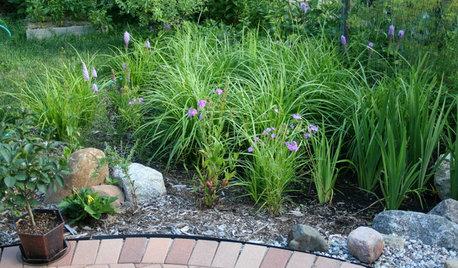
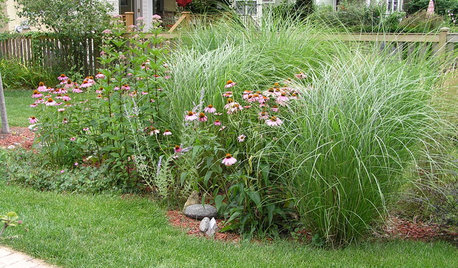

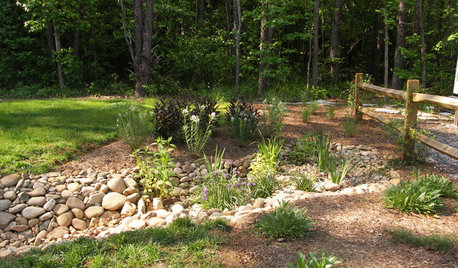
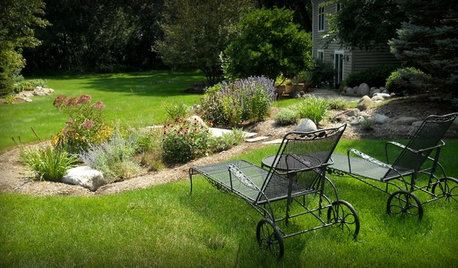
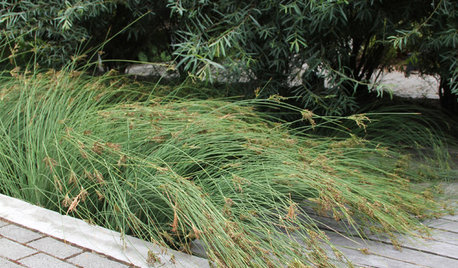
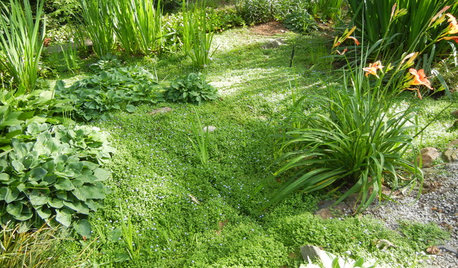
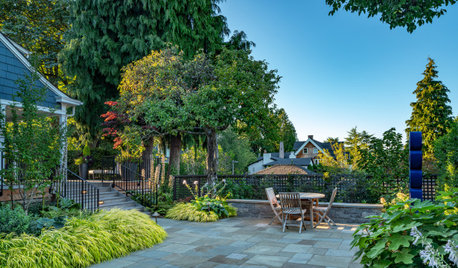
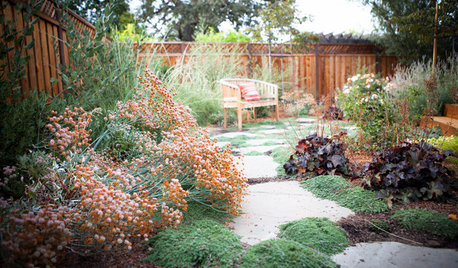







dbarron